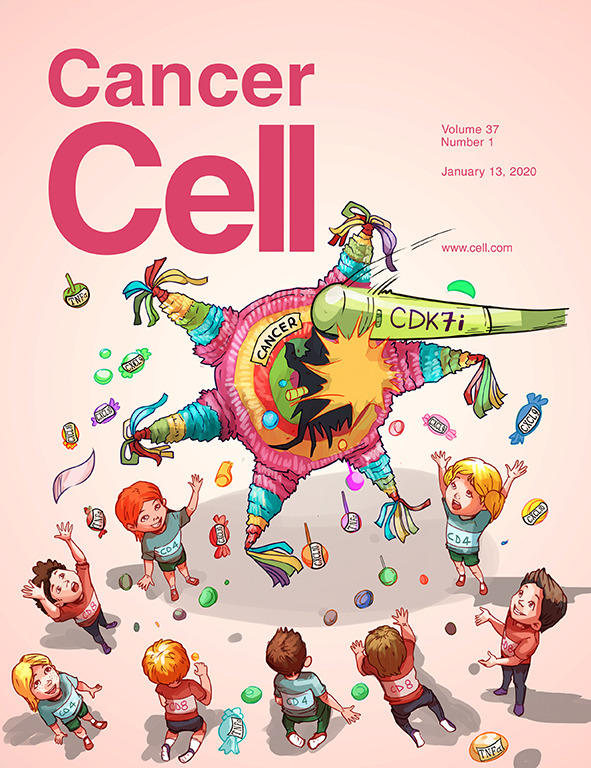Bone metastases diminish extraosseous response to checkpoint blockade immunotherapy through osteopontin-producing osteoclasts
IF 44.5
1区 医学
Q1 CELL BIOLOGY
引用次数: 0
Abstract
Bone metastatic lesions typically associate with suboptimal responses to immune checkpoint blockade (ICB) therapies. In this study, we observed that across multiple clinical cohorts and a variety of mouse models, the presence of osseous metastases induces ICB resistance in extraosseous tumors. Mechanistically, this long-distance communication is mediated by osseous tumor-conditioned osteoclasts producing osteopontin (OPN). Through circulation, OPN reprograms the extraosseous tumor microenvironment and impairs T cell recruitment and differentiation of CD8+TCF1+ precursor cells, an essential population for ICB efficacy. In mice, ICB responsiveness is restored by αRANKL blockade of osteoclastogenesis, neutralization of OPN in circulation, or tissue-specific depletion of OPN in osteoclasts. Both the mode of action and therapeutic benefit were validated in clinical cohorts with the αRANKL-ICB combinatory regimen. These findings establish bone as a specific immunoregulatory organ exploited by tumor metastasis and suggest osteoclastogenesis as a promising target to improve ICB prognosis in patients with bone metastasis.

骨转移瘤通过产生骨桥蛋白的破骨细胞减少对检查点阻断免疫疗法的骨外反应
骨转移病变通常与免疫检查点阻断(ICB)治疗的次优反应相关。在这项研究中,我们观察到在多个临床队列和多种小鼠模型中,骨转移的存在诱导骨外肿瘤的ICB抵抗。从机制上讲,这种远距离通讯是由产生骨桥蛋白(OPN)的骨肿瘤条件破骨细胞介导的。通过循环,OPN重新编程骨外肿瘤微环境,并损害T细胞募集和CD8+TCF1+前体细胞的分化,而CD8+TCF1+前体细胞是ICB疗效的重要群体。在小鼠中,通过αRANKL阻断破骨细胞生成、循环中OPN的中和或破骨细胞中OPN的组织特异性耗损,ICB反应性得以恢复。在αRANKL-ICB联合方案的临床队列中验证了作用方式和治疗效果。这些发现表明骨是肿瘤转移的特异性免疫调节器官,并提示破骨细胞生成是改善骨转移患者ICB预后的一个有希望的靶点。
本文章由计算机程序翻译,如有差异,请以英文原文为准。
求助全文
约1分钟内获得全文
求助全文
来源期刊

Cancer Cell
医学-肿瘤学
CiteScore
55.20
自引率
1.20%
发文量
179
审稿时长
4-8 weeks
期刊介绍:
Cancer Cell is a journal that focuses on promoting major advances in cancer research and oncology. The primary criteria for considering manuscripts are as follows:
Major advances: Manuscripts should provide significant advancements in answering important questions related to naturally occurring cancers.
Translational research: The journal welcomes translational research, which involves the application of basic scientific findings to human health and clinical practice.
Clinical investigations: Cancer Cell is interested in publishing clinical investigations that contribute to establishing new paradigms in the treatment, diagnosis, or prevention of cancers.
Insights into cancer biology: The journal values clinical investigations that provide important insights into cancer biology beyond what has been revealed by preclinical studies.
Mechanism-based proof-of-principle studies: Cancer Cell encourages the publication of mechanism-based proof-of-principle clinical studies, which demonstrate the feasibility of a specific therapeutic approach or diagnostic test.
 求助内容:
求助内容: 应助结果提醒方式:
应助结果提醒方式:


